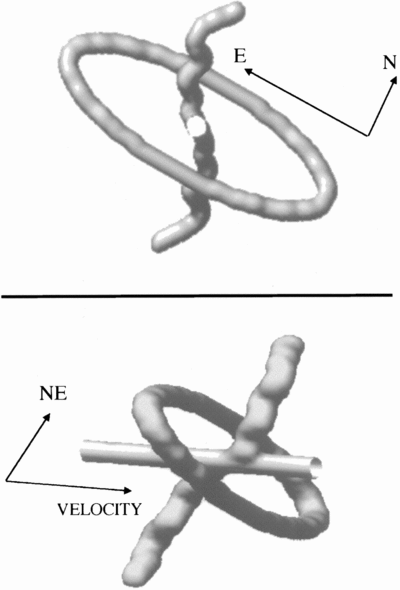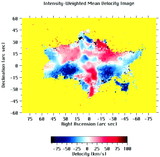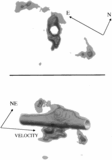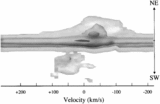Image Details

Caption: Fig. 5.
Isosurface from a highly idealized schematic model convolved with an instrumental point‐spread function to simulate a data cube. This model is meant to be illustrative and not well determined but schematically compares with the actual data cube shown in Fig. 3. The upper panel shows the model data cube oriented with the celestial coordinate axes (α, δ) lying in the plane of the figure (northeast is up, and southeast is left) and the velocity coordinate axis implicitly perpendicular to the plane of the figure. The lower panel shows the model data cube rotated to simultaneously view the velocity and spatial structure of both jet components. The elliptical nebulosity is modeled as a circular ring expanding at 55 km s−1 as seen at an inclination angle ﹩i\sim 70^{\circ }﹩ (see text). The similarly inclined bipolar jet results from motion which produces a small‐scale helical structure forming around a larger scale helical path (see text for a possible explanation). In this figure, the small‐scale helix has an apex angle of 16° which has undergone ~3.5 turns, and the large‐scale helix has an apex angle of 60° which has undergone ~﹩\frac{1}{3}﹩ of a turn. In this model, jet radial velocities are in the range ±175 km s−1, suggesting maximum jet velocities of~±512 km s−1.
Copyright and Terms & Conditions
© 1999. The American Astronomical Society. All rights reserved. Printed in U.S.A.







